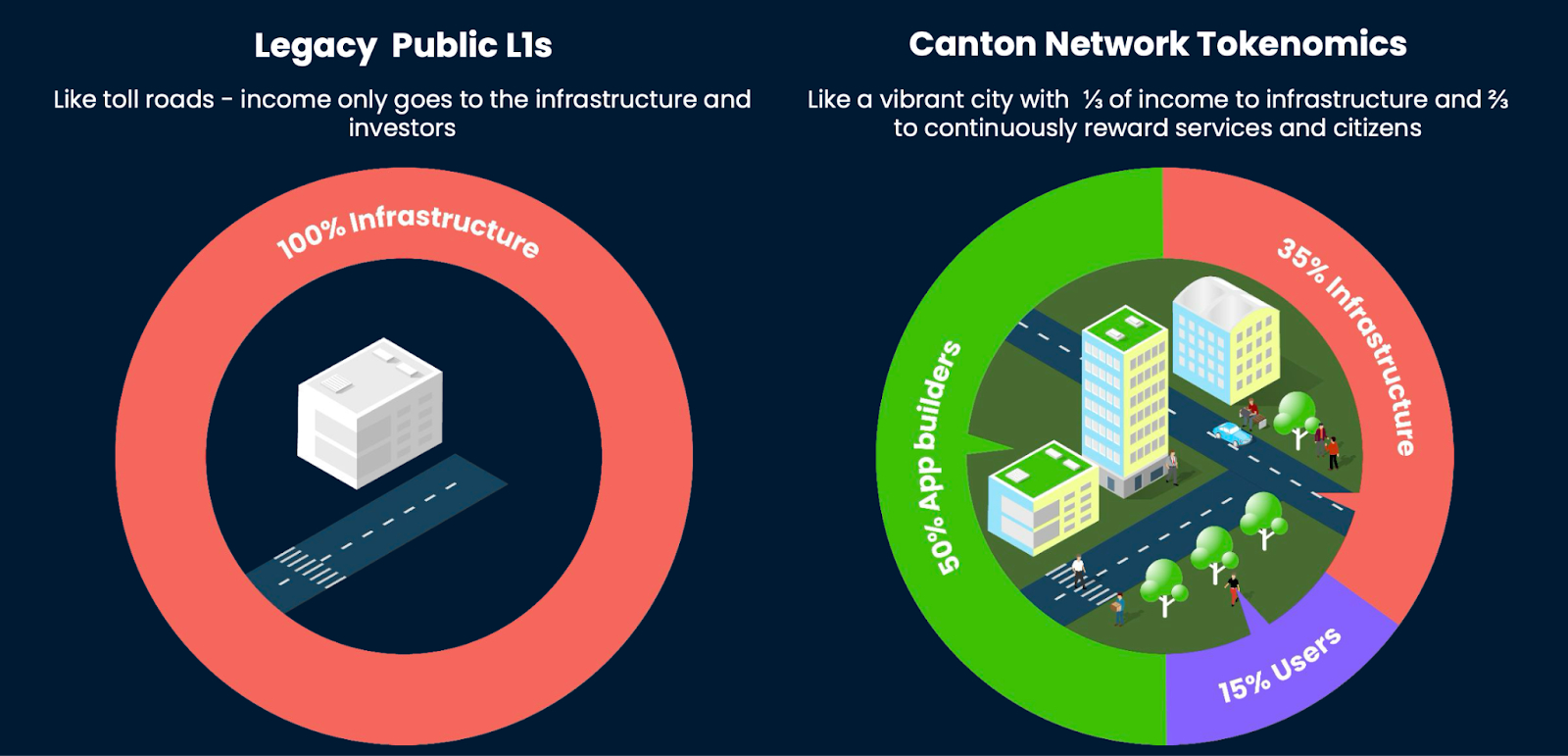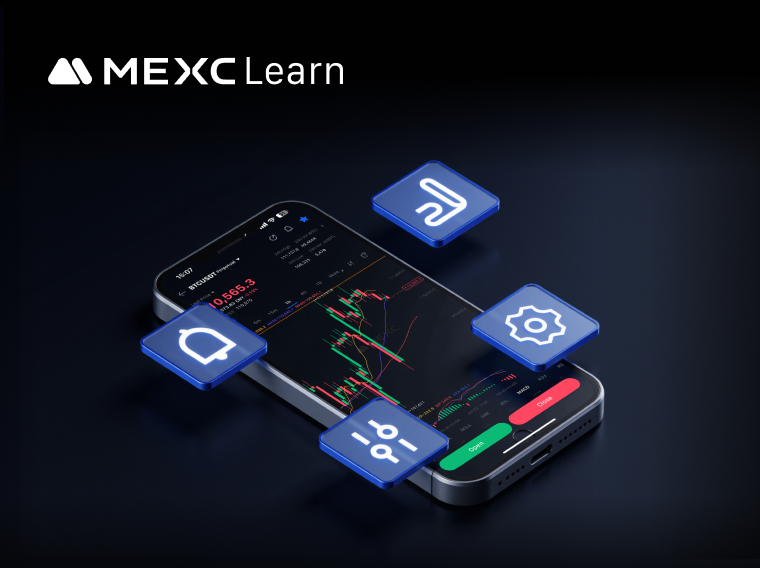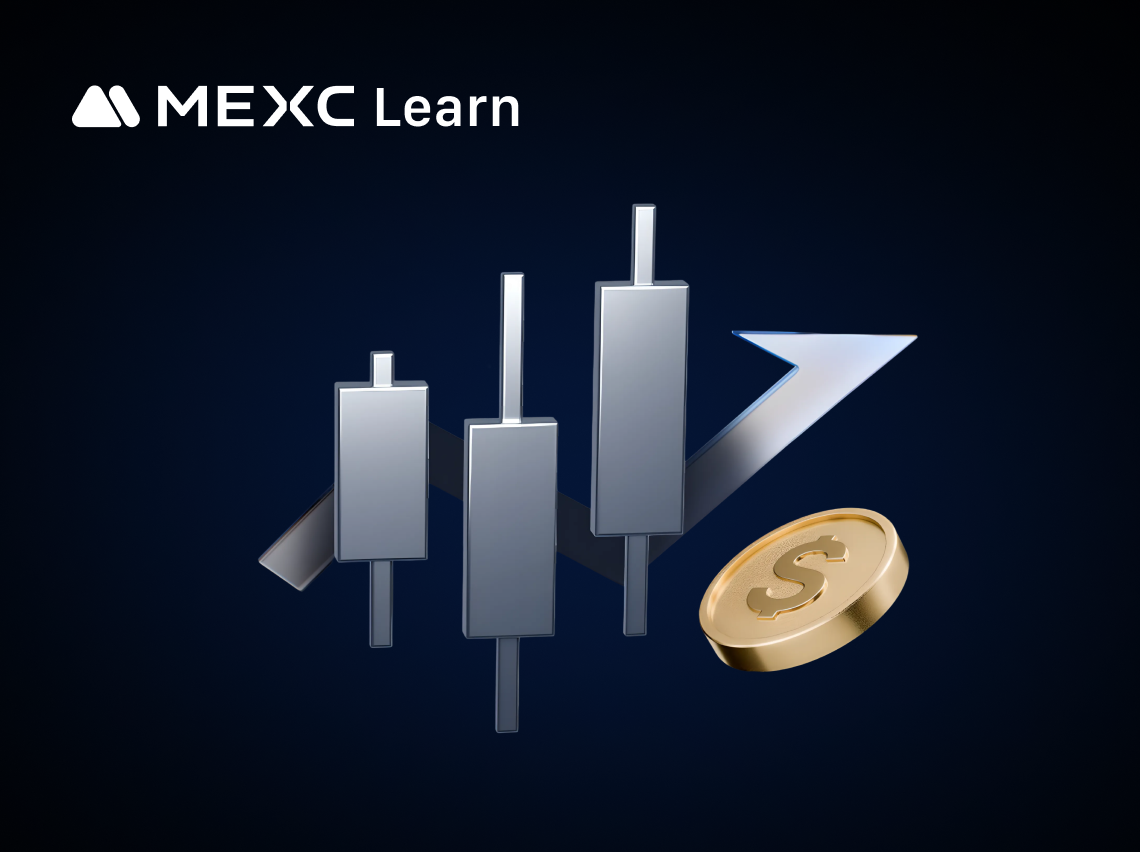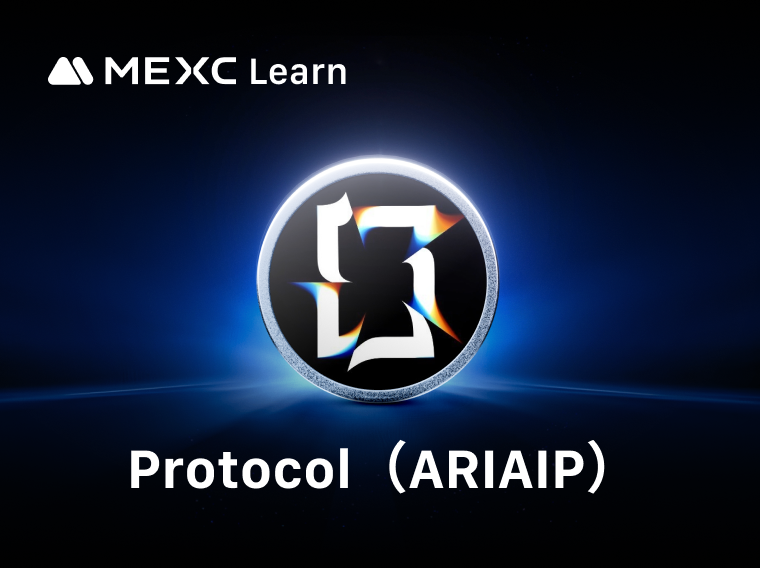Enterprise blockchain adoption has long struggled with privacy limitations, scaling bottlenecks, and unfair token distribution models. Canton Coin (CC) emerges as the native utility token of Canton Network, an institutional-grade blockchain infrastructure built by Digital Asset after a decade of development. This guide explores Canton Network's innovative architecture, Canton Coin's revolutionary fair-launch tokenomics, and how this ecosystem is transforming regulated finance through verifiable privacy and composable smart contracts.
Key Takeaways:
Canton Network provides enterprise-grade blockchain infrastructure with sub-transaction privacy, atomic composability, and horizontal scalability for institutional finance applications.
Canton Coin (CC) implements revolutionary fair-launch tokenomics with zero pre-mine, allocating 50% of minting rights to application builders rather than early investors.
The burn-and-mint equilibrium mechanism ensures Canton Coin's price reflects actual network utility by burning all fees and minting new tokens based on participant contributions.
Canton Network processes over $1.5 trillion monthly in production transactions, demonstrating proven institutional adoption that competing blockchains have yet to achieve.
Canton Coin can be acquired by earning through network participation or trading on MEXC exchange, with transparent rewards split among Super Validators, Application Providers, and Validators.
Canton Network represents a paradigm shift in blockchain architecture—a permissionless network of permissioned subnets that delivers enterprise-grade privacy without sacrificing composability. Built on Digital Asset's Canton protocol and Daml smart contract language, the network enables financial institutions to synchronize data across organizations while maintaining complete control over privacy, permissions, and governance. Unlike monolithic blockchains that force all participants to see all transactions, Canton Network implements sub-transaction privacy. Each participant sees only the contracts they're stakeholder to, creating a virtual global ledger where no single party holds the entire state. Synchronization domains—operated by Canton Service Providers (CSPs)—sequence encrypted messages between participants, enabling atomic cross-application transactions without exposing sensitive data to infrastructure operators.
The network launched publicly in June 2024 when a consortium of leading financial institutions deployed the Global Synchronizer, a decentralized synchronization domain operated through Byzantine Fault Tolerant consensus. Today, Canton Network processes over $4 trillion in repo transactions monthly, demonstrating production-scale institutional adoption that competing platforms have yet to achieve.
Aspect | Canton Network | Canton Coin (CC) |
Definition | Layer 1 blockchain protocol and infrastructure | Native utility token of the network |
Function | Synchronizes data across institutions with privacy | Pays fees, incentivizes participants, enables payments |
Components | Participant nodes, synchronization domains, Daml contracts | Digital asset with burn-mint equilibrium mechanism |
Governance | Decentralized via Super Validator consensus (2/3 majority) | Token parameters set by Super Validator votes |
Launch | TestNet June 2023, MainNet June 2024 | Launched simultaneously with MainNet (June 2024) |
Purpose | Enable private, composable enterprise applications | Reward utility provision and facilitate value transfer |
Analogy | Similar to Ethereum (platform) | Similar to ETH (native token) |
Key Distinction: Canton Network provides the infrastructure and protocol, while Canton Coin serves as the economic layer that coordinates, secures, and rewards all participants across the network.
Public blockchains like Ethereum broadcast all transaction data globally, creating permanent public records incompatible with trade secrets, regulatory requirements, and GDPR compliance. Canton Network implements programmable privacy at the sub-transaction level—issuers see only their assets, counterparties see only their bilateral interactions, yet everyone can cryptographically verify transaction integrity without trusted intermediaries.
Traditional blockchains force unrelated applications to compete for the same global throughput, causing network congestion when any single application succeeds. Canton Network eliminates this bottleneck through horizontal partitioning—each synchronization domain processes independent workflows in parallel, allowing the network to scale without global resource contention or unpredictable fee spikes.
Layer 2 solutions and sidechains achieve scalability by fragmenting state across isolated networks, but destroy atomic composability—the ability to combine workflows from different applications in single transactions. Canton Network preserves composability across synchronization domains through Daml's hierarchical transaction model, enabling seamless integration without bridges or wrapped assets.
Most blockchain networks distribute the majority of tokens to founders, venture capitalists, and infrastructure operators before delivering utility, concentrating value among early insiders while application builders receive minimal incentive. Canton Coin inverts this model—zero pre-mine, zero pre-sale, with 50% of token minting rights allocated to application providers who drive actual network usage.
Digital Asset was founded in 2014 with a mission to solve distributed application complexity through mature technology and proven use cases. After developing the Daml smart contract language and Canton protocol over a decade, Digital Asset reached production readiness—processing over $1.5 trillion monthly in repo transactions. In May 2023, thirty financial institutions announced the Canton Network. Following extensive testing, the Global Synchronizer launched on MainNet in June 2024, followed by Canton Coin in July 2024, operated by independent Super Validators through Byzantine Fault Tolerant consensus. Canton Coin launched in July 2024 as the network's native utility token, implementing a fair-launch model where every token in circulation has been earned by providing utility—not sold to investors.
Daml enforces authorization at the language level—every contract action requires explicit approval from designated parties, and authorization automatically propagates through transaction consequences. This prevents common vulnerabilities like reentrancy attacks while enabling seamless delegation patterns that mirror real-world legal agreements, making it impossible for parties to become contract signatories involuntarily.
Canton partitions each transaction into subtrees visible only to relevant stakeholders. In an asset swap, Alice and Bob see the entire transaction, but each asset issuer sees only transfers involving their own issuance—nothing about the counterparty's asset or the bilateral swap agreement. Cryptographic proofs ensure transaction integrity without exposing private data to validators or infrastructure operators.
The Global Synchronizer employs a two-phase commit protocol where participant nodes validate their transaction portions and send encrypted confirmations to a mediator. Super Validators run Byzantine Fault Tolerant consensus requiring two-thirds agreement on message ordering, preventing any single operator from censoring transactions or manipulating state while maintaining high throughput through parallelized validation.
Canton implements data minimization by design—participants store only contracts where they're stakeholders. History pruning allows organizations to archive old data while maintaining cryptographic commitments that prevent repudiation. Contract signatories can jointly agree to replace ledger entries with hashed references, enabling the right to be forgotten without compromising auditability.
Parties connect to multiple synchronization domains operated by different Canton Service Providers, creating a mesh network where domain choice determines trust assumptions, latency, and costs. Cross-domain transactions compose atomically whenever participants share a common domain, and contracts can migrate between domains to avoid lock-in, enabling true interoperability without blockchain bridges.
Financial institutions leverage Canton Network for issuing and settling tokenized securities with cryptographic delivery-versus-payment guarantees. The sub-transaction privacy model enables confidential bilateral trades while maintaining audit trails for regulators. Settlement occurs atomically in seconds rather than days, eliminating counterparty risk and reducing capital requirements for market participants.
Hashnote USYC, a leading tokenized money market instrument, operates on Canton Network for private transfers between institutions. Brale provides Canton-native stablecoin conversion, enabling institutions to transform major stablecoins into network-compatible equivalents for confidential payment settlement. These applications demonstrate Canton's capability to handle high-value institutional payment flows with privacy and compliance.
QCP, a prominent cryptocurrency market maker, builds margin management solutions on Canton Network to maintain confidentiality in bilateral trading operations. The platform's atomic composability enables complex multi-leg derivatives transactions while keeping counterparty positions private, addressing a critical limitation of transparent blockchain systems for sophisticated financial instruments.
Canton Network processes over $1.5 trillion in repo transactions monthly across leading financial institutions. The infrastructure reduces millions in annual operating costs by eliminating manual reconciliation through synchronized state, while maintaining the privacy and control that traditional financial workflows require. This production deployment validates Canton's enterprise readiness at institutional scale.
Canton Coin implements a revolutionary fair-launch model with zero pre-mine, zero pre-sale, and zero founder allocations. Every Canton Coin in circulation has been earned by participants providing utility to the network. The distribution operates through continuous minting rights split among three stakeholder groups:
Current Distribution (as of 2025)
50% to Application Providers: Developers deploying smart contract applications and tokenized assets on Canton Network
35% to Infrastructure Providers: Split between Super Validators (operating Global Synchronizer infrastructure) and Validators (running participant nodes)
Super Validators initially received ~80% of infrastructure allocation to bootstrap the network
Validator share increases progressively—by year five, Validators receive larger allocation than Super Validators
15% to Validators: Users operating nodes that validate transactions they participate in
Minting Schedule
Years 0-10: 100 billion total Canton Coin can be minted, split 50/50 between infrastructure and applications
Year 10+: Steady-state issuance of 2.5 billion Canton Coin annually
Distribution shift: Application provider allocation increases from 15% (first six months) to 62% (years 1.5-5) to 75% (post-year 10)
Burn-and-Mint Equilibrium Canton Coin employs a unique stability mechanism where all network fees (denominated in USD) are burned rather than transferred, removing tokens from circulation. New tokens can be minted by participants based on their utility contributions. The system targets 2.5 billion tokens burned and minted annually at steady state. When usage exceeds this rate, supply contracts and token value increases; when usage falls below it, supply expands and value adjusts downward. This mechanism ensures Canton Coin's price reflects actual network utility rather than speculation.
Fee Structure
Percentage transfer fees: 1% on first $100, declining to 0.001% above $1 million (similar to payment network costs)
Resource usage fees: Base transfer, locking, and holding fees to cover infrastructure costs
Synchronizer traffic fees: $17 per MB for bandwidth consumption beyond free tier
Canton Coin serves as the primary payment mechanism for Global Synchronizer traffic fees. Users burn Canton Coin to create traffic balances denominated in megabytes, which are then consumed when submitting transactions. All fees are denominated in USD with the token price floating, ensuring predictable costs regardless of token market value fluctuations.
Canton Coin rewards all ecosystem participants proportionally to their utility contributions. Application providers mint tokens based on fees their applications generate. Validators earn rewards for transaction facilitation and node uptime. Super Validators receive allocations for operating Byzantine Fault Tolerant consensus infrastructure, aligning incentives across the entire network.
Application providers can denominate their service fees in Canton Coin, creating direct utility demand. For example, the Canton Name Service charges application fees in Canton Coin for validator name lookup services. This optional payment mechanism allows developers to build Canton-native business models without forcing users into token dependency.
While Canton Network maintains privacy for application data, Canton Coin transactions are publicly visible to provide network usage transparency. The token serves as a public gauge of ecosystem activity, allowing observers to assess which applications deliver the most value without exposing sensitive business data or user identities.
Canton Network's competitive advantage lies in solving the enterprise blockchain trilemma that competitors cannot: simultaneous privacy, composability, and scalability. Where Ethereum sacrifices privacy for transparency, Hyperledger Fabric sacrifices composability for privacy, and Corda sacrifices subtransaction privacy for efficiency, Canton delivers all three through its hierarchical transaction model and synchronization domain architecture.
The network's primary competition comes from traditional financial infrastructure rather than other blockchains—T+2 settlement systems, centralized clearing houses, and siloed application vendors. Canton's demonstrable ability to process $1.5 trillion monthly at production scale positions it as the infrastructure layer for institutional digital assets, with network effects accelerating as more applications join and compose workflows atomically across previously isolated systems.
Composability: Fabric's channels and most layer-2 solutions create isolated silos requiring bridges for cross-network transactions. Canton enables atomic composition across synchronization domains without bridges, allowing seamless workflow integration when participants share common infrastructure.
Scalability: Unlike Ethereum's global state bottleneck, Canton scales horizontally—independent workflows process in parallel across different domains. Each participant validates only their own transactions rather than replicating a global ledger, removing the throughput ceiling that plagues replicated state machines.
Compliance: Blockchains with immutable history clash with GDPR's right to forget. Canton implements history pruning and contract redaction with stakeholder consent, balancing auditability requirements against privacy regulations—a critical capability for regulated financial institutions.
Canton Coin (CC) is available for trading on MEXC, a leading cryptocurrency exchange trusted by millions of users globally. MEXC provides institutional-grade security, deep liquidity, and competitive fee structures optimized for both retail and professional traders. The platform offers multiple trading pairs including CC/USDT, enabling seamless access to Canton Network's utility token with 24/7 customer support and advanced trading features.
Step-by-step guide to purchasing Canton Coin on MEXC:
Create a MEXC account by visiting the official MEXC website and completing registration with email verification.
Complete KYC verification to unlock full trading functionality and withdrawal capabilities.
Deposit funds into your MEXC account using USDT, BTC, or other supported cryptocurrencies.
Navigate to the trading section and search for "CC" or "Canton Coin" in the markets list.
Select the CC/USDT trading pair to access the Canton Coin order book.
Choose order type: market order for immediate execution or limit order to set your desired purchase price.
Enter the amount of Canton Coin you wish to purchase and review the total cost.
Confirm your order and wait for execution—market orders fill instantly while limit orders wait for price matching.
Verify your purchase by checking your MEXC wallet balance to confirm Canton Coin holdings.
Canton Network reimagines enterprise blockchain through a decade of technological maturity and production validation. Canton Coin's fair-launch tokenomics—zero pre-mine, burn-and-mint equilibrium, majority allocation to builders—represents a fundamental departure from extractive token models. With sub-transaction privacy, atomic composability, and horizontal scalability, the ecosystem solves problems that have prevented institutional blockchain adoption. As Canton Network processes trillions in institutional value and expands its validator network, Canton Coin rewards those who contribute to this transformation of regulated finance.
Looking to grow your crypto portfolio beyond Canton Coin? MEXC's Referral Program offers an exceptional opportunity to earn up to 40% commission on your friends' trading fees. Simply share your unique referral code, invite friends to join MEXC, and automatically receive rewards when they complete trades. The program features three earning tiers: earn USDT commissions, unlock massive airdrop rewards, and increase kickback rewards by 50%. With immediate commission distribution, 40% rates for both Spot and Futures trading, and up to 1,095 days of commission validity, MEXC's Referral Program provides a sustainable way to enhance your crypto income. Visit MEXC's Referral Programme page to generate your code and start building your network today.














